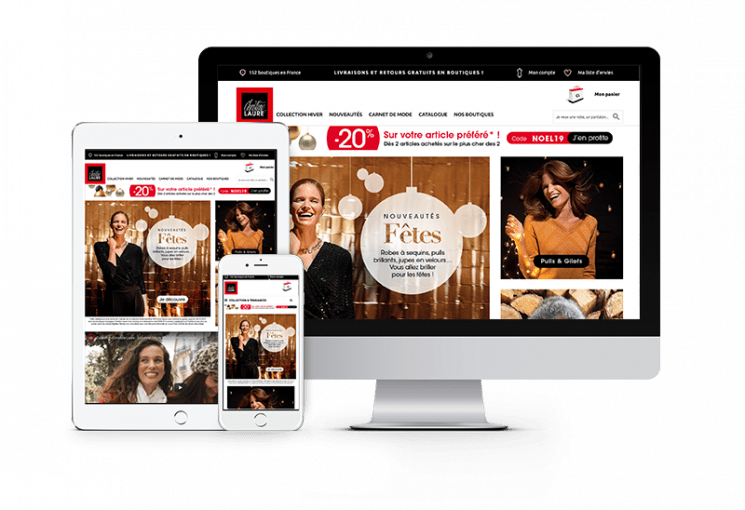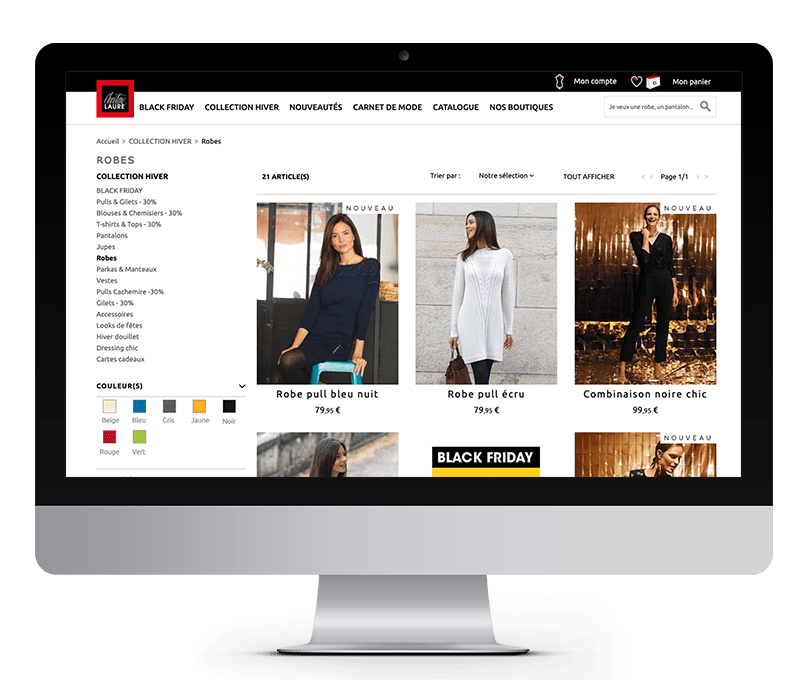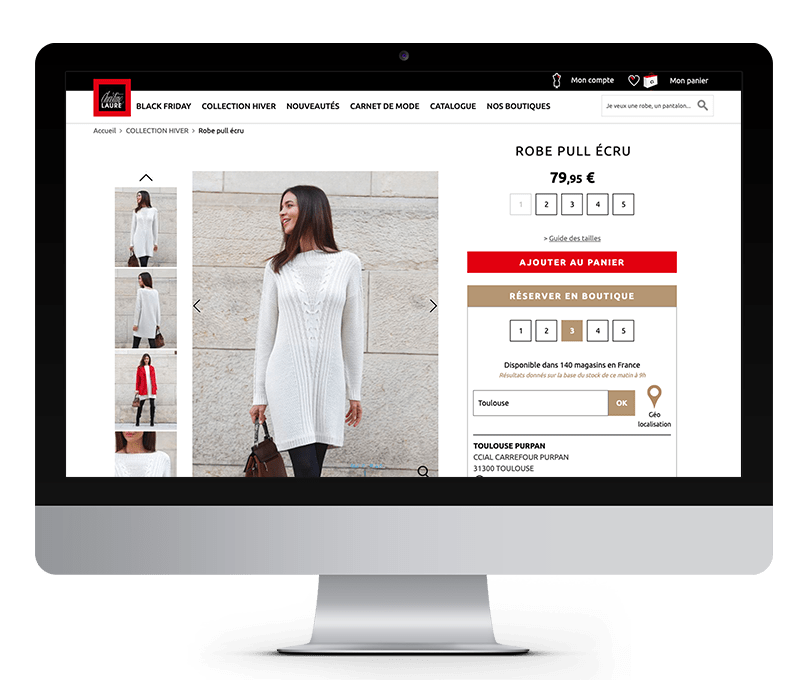
CONTEXT
Christine Laure is a clothing retailer for women created in 1960.
Christine-Laure stores are mainly located in peri-urban shopping areas. As the number of visitors in those areas is declining, the strategic objective is to attract customers to the brick and mortar stores thanks to the e-commerce site
The click-and-collect at Christine Laure is designed to bring value to the “in-store” services (e.g. store fitting, customer guidance).
CLIENT’S REQUEST
As the customer didn’t want to go through a cloud solution, it was necessary to design a custom made solution.
Christine Laure decided to propose multi-product bookings for selected stores by bringing value to their service offering (fitting, adjustments). The online booking journey had to be independent from the check-out journey.
There were multiple success criteria :
- Provide full transparency on the online booking service to the customer (understanding of the service and its constraints).
- Facilitate Christine Laure in-store operations in order to guarantee a smooth user experience ( e.g. higher reactivity).
- Improve the information reliability concerning in-store stock availability
PROJECT EXECUTION
After a scoping phase to structure the project, the initial step was the service conception by respecting the multi-product / multi-store guideline.

Online booking service was previously available but was mono-product and mono-store (1 product per reservation and per store). This was the biggest challenge to handle during the conception.
On the client side, the solution allows the customer to book eligible products from selected stores, thanks to the geo-localisation system or the manual search option.

This project was completed in 3 months. In order to meet the deadlines, it was decided to follow Agile methodology.
Phase 1 focused on the data model and data storage of the stores and their product inventories, as well as the development of Magento backend user interface (admin + stores handling). This phase was the technical foundation to the service architecture developed in the next phase.
Phase 2, focused on the implementation of the customer facing services and their operational counterparts :
- Product availability (status and/or stock)
- Store information (location, schedule, closures)
- Reservation lists handling
- Storeshops/customers notifications by email
Phase 3 focused on the front and back main actions, in particular with the Bewoopi API connection. This API was selected to trigger calls to stores to let them know that a reservation must be confirmed within an hour.
Phase 4 ended with the handling of special cases and secondary actions.



